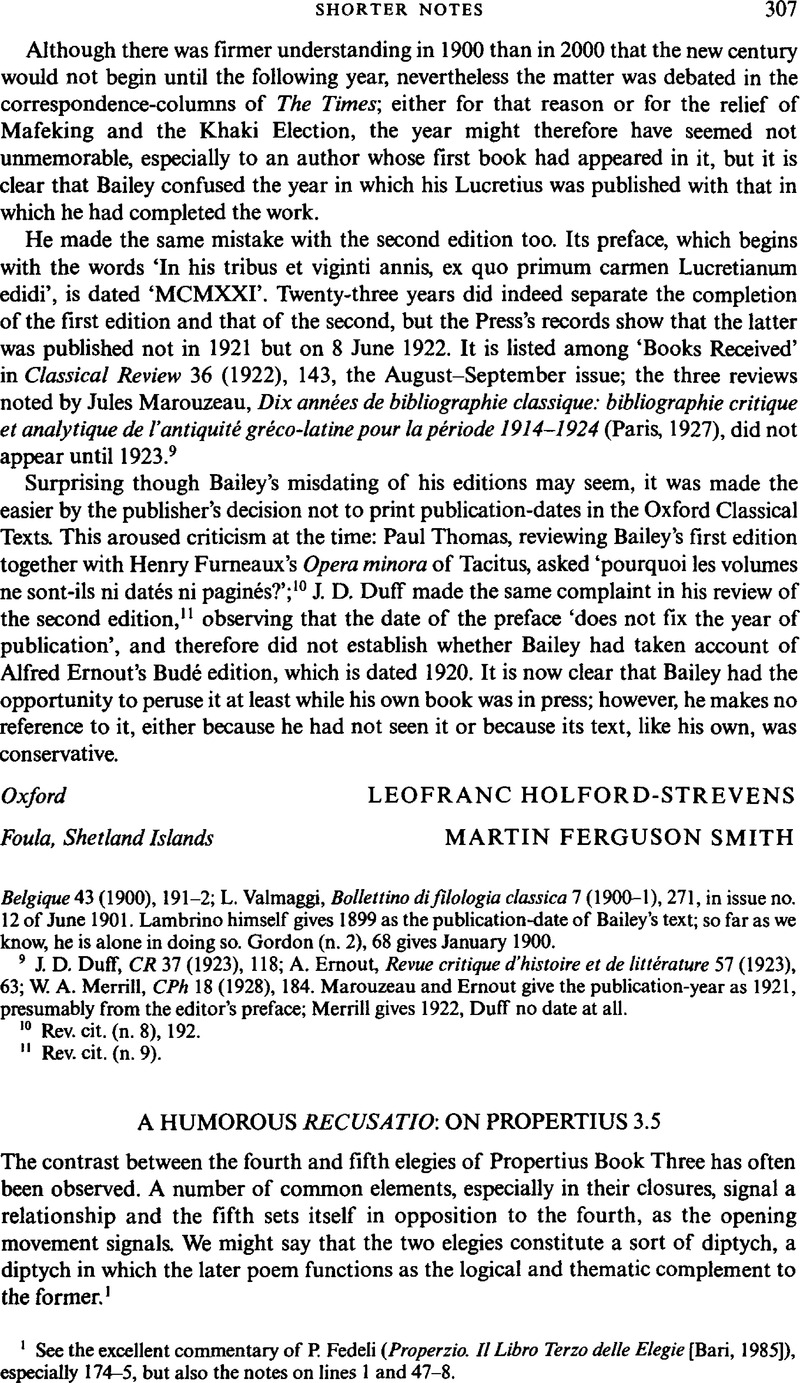Published online by Cambridge University Press: 11 February 2009

1 See the excellent commentary of Fedeli, P. (Properzio. It Libro Terzo delle Elegie [Bari, 1985])Google Scholar, especially 174–5, but also the notes on lines 1 and 47–8.
2 Critics usually stress the link to the famous passage of Georgics 2.475–82 (cf. Fedeli, 188–9), though it seems to me that this is a link of secondary importance. For Horace, cf. La Penna, A., ‘Towards a history of the poetic catalogue of philosophical themes’, in Harrison, S. J. (ed.), Homage to Horace (Oxford, 1995), 314–28.Google Scholar
3 For me iuvetl iuvat on its own in Propertius, cf. 2.13.11 and 2.34.59 (on the mood, cf. S. J. Heyworth ‘Notes on Propertius Books I and II’, CQ 34 [1984], 394–405, at 399).
4 Cf. Maltby, R., A Lexicon of Ancient Latin Etymologies (Leeds, 1991), s.v. iuvenis (p. 320).Google Scholar
5 The crowning through the agency of the Muses recalls in Lucretius the tradition of the symbolic gift which begins in Hesiod (Theog 30–1) and is continued by Theocritus (7.128–9): cf. Kenney, E. J., ‘Doctus Lucretius’, Mnemosyne 23 (1970), 371.Google Scholar Lucretius describes how Ennius was the first to bring back down from Helicon a crown of evergreen leaves: cf. Waszink, J. H., ‘Lucretius and poetry’, Mededelingen der Koninkl. Nederl. Akad van Wet. 17 (1954), 250–1Google Scholar; Kambylis, A., Die Dichterweihe und ihre Symbolik (Heidelberg, 1965), 173Google Scholar; Suerbaum, W., Untersuchungen zur Selbstdarstellung älterer römischer Dichter Livius. Spudasmata 19 (Hildesheim, 1968), 57–9 and especially 310–11Google Scholar; cf. also Nisbet-Hubbard, A Commentary on Horace, Odes, Book 1, 97–8.
6 Cf. 3.17.5–6.
7 Cf. Davies, G., Polyhymnia (Berkeley, 1991), 11–77.Google Scholar
8 Krokowski, G., ‘De Propertio ludibundo’, Eos 29 (1926), 81–100Google Scholar; Lefèvre, E., Propertius Ludibundus (Heidelberg, 1966).Google Scholar
9 Contra Courtney, E., ‘Three poems of Propertius’, BICS 16 (1969), 70–87Google Scholar, at 72.
10 Cf. Conte, G. B., ‘Proemi al mezzo’, in Virgilio: II genere e i suoi confini, (Milano2, 1984), 121–3Google Scholar (= ‘Proems in the middle’, YCS 29 [1992], 147–59).
11 Cf. Nisbet-Hubbard, A Commentary on Horace, Odes, Book I, 302: ‘Horace is not celebrating his friend so much as his own power to celebrate his friend.’
12 See definitively Traina, A., ‘Lucrezio e la “congiura del silenzio”’, in Poeti latini (e neolatini). Note e saggi filologici (Bologna2, 1986), 81–91.Google Scholar
13 I am grateful to the late Don Fowler for translating this noterella.